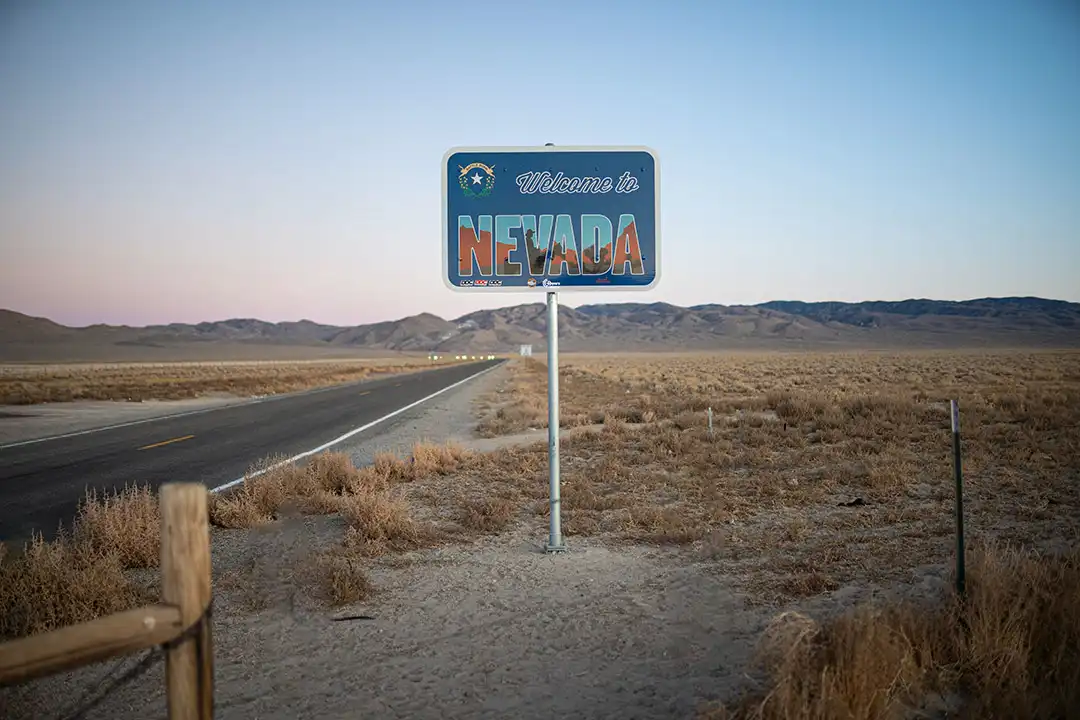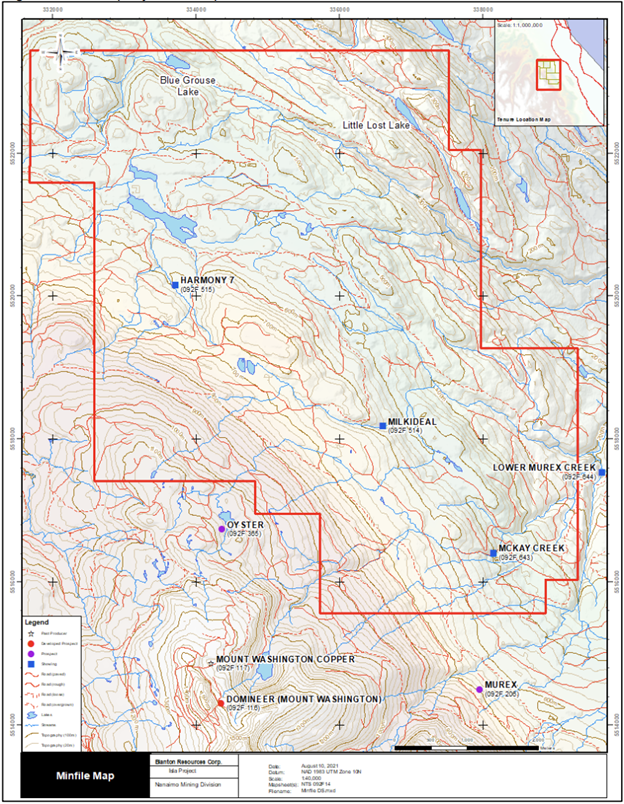Other Properties
The Isla Property is located approximately 16 km to 22 km southwest of the town of Campbell River, British Columbia, Canada (Figure 1). Isla Property consists of six contiguous Mineral Claims covering approximately 4,295.1 hectares. The Mineral Claims are registered in the Nanaimo Mining Division of British Columbia on map sheets 092F.074 and 92F.084.
Global Supply
Global Demand (2035)
Countries phasing out fossil fuel cars in the next 10-30 years
Under Management in the USA
Project SUmmary
The exploration model for the Black Rock South Project is a Clayton Valley evaporative brine deposit as described in USGS Open File Report 2013-1006.
This particular block of ground has been chosen due to the many springs that flow in to it consisting of. The Company owns a 100% interest in 192 placer claims, comprising 3,840 acres.
The Black Rock South property covers an area of playa underlain by a moderately deep basin interpreted from gravity and seismic surveys indicating a maximum thickness of valley-fill deposits of about 1,200 m/ 3,600 ft.
ISLA PROPERTY
The Isla Property is located approximately 16 km to 22 km southwest of the town of Campbell River, British Columbia, Canada (Figure 1). Isla Property consists of six contiguous Mineral Claims covering approximately 4,295.1 hectares. The Mineral Claims are registered in the Nanaimo Mining Division of British Columbia on map sheets 092F.074 and 92F.084. Andrew Molnar is the 100% owner of the Mineral Claims. The Isla Property Mineral Claims were staked using the British Columbia Mineral Titles Online computer Internet system. With the British Columbia mineral claim staking system there can be no internal fractions or open ground. The centre of the Isla Property is located at 49° 80’ North Latitude -125° 28’ West Longitude located on NTS map sheet 092F14.
A first phase of exploration activities has been completed at the Isla property gold project located approximately 16 kilometres southwest of the town of Campbell River, B.C., Canada. The program is in accordance with the recommendations of the technical report prepared for the Company in respect of the Project which is available on www.Sedar.com, and was performed by Rio Minerals Ltd. under the supervision of Andrew Molnar.
The Company carried out a field exploration program on the Isla Property in 2022 that included the collection of 402 soil samples taken from two surveyed grids, 5 rock samples, 4 petrographic samples, and 17.933 kilometers of ground magnetometer surveys. Soil samples were collected from the Lost Lake and Regan Grids and the magnetometer survey was conducted on the Lost Lake Grid.
Soil sampling carried out in the Regan Creek area identified significant anomalous values of copper, gold, and arsenic located in the west and north portion of the grid. Sampling returned the following values: 262 ppm Cu and 282 ppm Cu, 993 ppm As and 1590 ppm As, as well as 105 ppb Au.
The Lost Lake grid returned elevated Cu in soil with values greater than 129 ppm Cu to a high of 409 ppm Cu.
The soil grids were successful in expanding the area of the soil anomalies in all directions.
Rock sampling returned values of 630 ppm and 2310 ppm Cu. Analysis of rock samples from bedrock in the area of anomalous copper in soil anomalies consists of amygdaloidal basalt with variable (0.1-5% by volume) quartz-calcite-chlorite alteration, sparse disseminated and fracture filling pyrite-pyrrhotite, and trace amounts of copper bearing sulphide minerals such as chalcopyrite, bornite, and chalcocite.
In the LL Grid area, mineralization occurs adjacent to northwest trending faulting along the Tsolum River valley. It appears that conjugate faults and fracture zones spread out at oblique angles (east and northeast trending) from the main northwest trend. Oblique fault splays may explain the distribution of copper in soil as clusters.
The Regan Creek area aligns with a regional scale fault/fracture zone trending southeast towards the Milkideal quartz-sulphide veins. In Regan Creek, the exposed faults are commonly, and often altered with quartz-carbonate-ankerite as late-stage fracture filling extends several metres away from the fault. Some of these altered faults host veins/veinlets of quartz-carbonate, often containing sphalerite, galena, pyrite, chalcopyrite, and trace amounts of grey sulfide and realgar. Traced along strike, the Regan Creek fault zones splay in a multi-directional attitude and are altered with quartz-carbonate-ankerite as late-stage fracture filling adjacent to the faults. The vuggy low-sulphidation hydrothermal systems have resulted in vein and/or stockwork style mineralization. This fault is interpreted as being a part of an extensive series of faults related to the emplacement of the Eocene-Oligocene Mount Washington Plutonic Suite which host the Domineer & Mount Washington Copper polymetallic mineral deposits located approximately 3 kilometers south of the Isla Property.
Silt samples taken on the property have returned values of up to 325.3 ppb Au and 2418.7 Cu. Soil samples have returned up to 996.5 ppm Au and 409 ppm Cu.
The 2022 ground magnetometer survey identified two significant areas of interest that should be followed up due to positive (>54,000 nT) anomalies. Additionally, the 2022 survey identified a northwest trending, 850 meter long by 50-meter wide negative (<53,400 nT) anomaly area of interest in the western part of the survey area.
Results to date from the Isla property demonstrate strong potential for gold and copper bearing mineralization that warrants further geological, geochemical, and geophysical exploration.
Project highlights
A recent mineral exploration on the Galt claim group under option to Surge Battery Metals (CSE:NILI) located 11 Miles to the South includes 51 playa sediment samples collected for chemical analysis at ALS Geochemistry in Vancouver, B.C.
Results of aqua regia leaching of the samples show 68 to 852 parts per million lithium (mean 365 ppm), 5.3 to 201 ppm cesium (mean 72 ppm) and 35 to 377 ppm rubidium (mean 180 ppm). Results from two seven-foot-deep auger holes show lithium, cesium, and rubidium concentrations in the range of 143.5 to 773 ppm Li, 56.8 to 102.5 ppm Cs and 155 to 272 Rb.
Recent Mineral Exploration completed by Nevada Energy Metals Inc. in 2016 (NICL-V) tested for lithium (Li) values in playa evaporates returned significant geochemical results at the Company’s 100% owned Black Rock Desert Project in Nevada. Geochemical sample points were arranged on a grid pattern of 11 lines spaced 400 meters apart with stations every 200 meters along the lines. One hundred and seventy (170) soil samples were collected. Results ranged from 82.8 to 520 parts per million (ppm) lithium with a median value of 182 ppm. Twelve samples carried over 300 ppm Li.
These results show that dissolved lithium has been transported into this portion of the Black Rock Desert and is available for potential concentration by evaporative brines. The exploration model for the Black Rock Project is a Clayton Valley evaporative brine deposit as described in USGS Open File Report 2013-1006.
The entire San Emidio Desert basin is a highly prospective lithium exploration zone and is about 38 km long and up to 11 km wide at the widest point with the central playa measures about 8.5 km north – south and 4.5 km east – west.
A proposed four-hole drill program at the Galt project is pending permitting approval is designed to test a tight grouping of highly anomalous surface sediment sampling locations which returned assay values with a high of 312 ppm lithium and a mean value of 215 ppm lithium.







